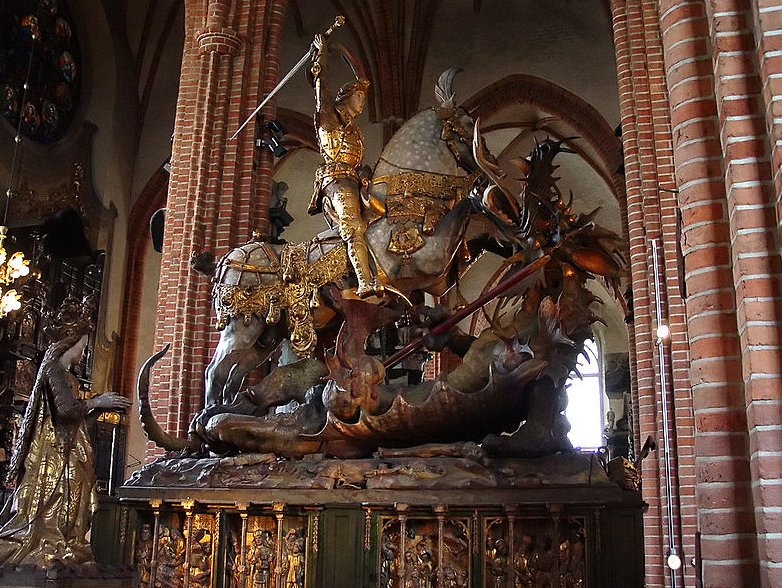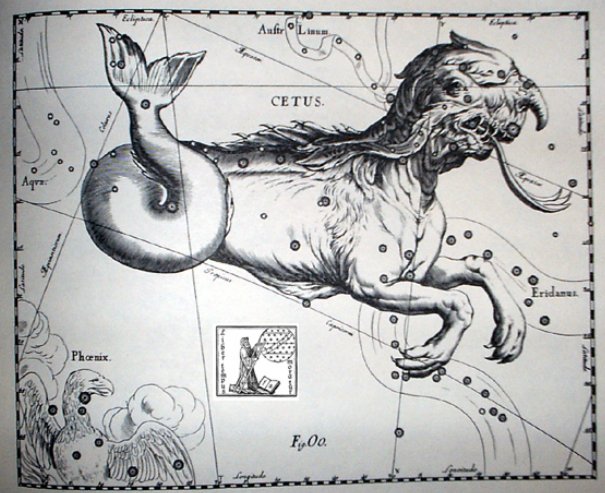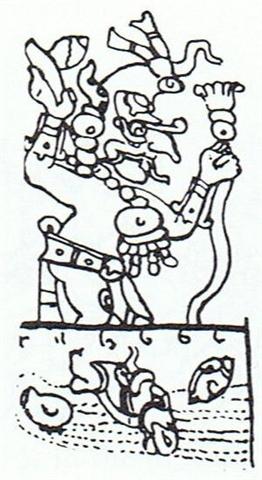The saint named George was not contemporary with the apostles. Instead he was a later Roman soldier. For some reasons, perhaps connected with the date of his death (23 April 303 A.D.), he attracted an ancient myth where the hero is killing a Dragon:  In Bablyonia it was Marduk (a personification of spring sun) who overcame the boundless and monstrous 'night' (Tiamat). Maybe also Metoro found right ascension day 33 necessarily connected with the time when this type of monster had to be killed.
The dark monster of winter ('night', 'sea') surely was visualized in the night sky as the Cetus 'stone figure'. Zero is no digit and cannot be counted. 303 (A.D.) in a way therefore is equivalent to 33. Mira at the neck of Cetus illustrates the flickering forces of life, which have survived the winter:
On Easter Island April 23 is not a spring month, which possibly may have induced the creator of the C text to draw down the front wing of manu rere in Ca2-7. The equivalent spring date south of the equator is late in October. Late in April the nakshatra star of Mira, κ Virginis, was visible close to the full moon and this was probably the right time for retelling the myth of how the Cetus 'whale' was killed:
In China the nakshatra reflection of the spring time 'Sea Monster' evidently was both a Crocodile and a Dragon, both a creature in the water and a creature for the air:
Notably RA day 215 (when the nakshatra star of Mira, the Neck star, rose heliacally) is not in early August, because this is 80 days too early:
Instead Gregorian day 215 can be said to harbour those heliacal stars which correspond to the nakshatra stars at the end of December (365 - 215 = 150 days later): 215 - 80 = 135. Acubens is α Cancri. The nakshatra star reflecting the heliacal rising of the 'neck of Cetus' (Mira) should be located around Gregorian day 114 (April 24) + 181 = 295 (October 22) = RA day 215. 365 (December 31) - 80 = RA day 285. A nakshatra star visible in the night of December 31 would be rising heliacally around RA day 285 + 181 - 365 = 101, which suits Sirius perfectly. This could explain why the Sirius manzil (Murzim) is beginning in August 4. However, maybe we should consider Arcturus (α Bootis, 215.4) a better nakshatra star for Mira than Neck. Although the Chinese lunar stations do not mention Arcturus (but instead κ Virginis), the Hindu nakshatra system has this important star as ruler of station 15:
Both pearls and coral are found beneath the surfarce of the sea.
|





